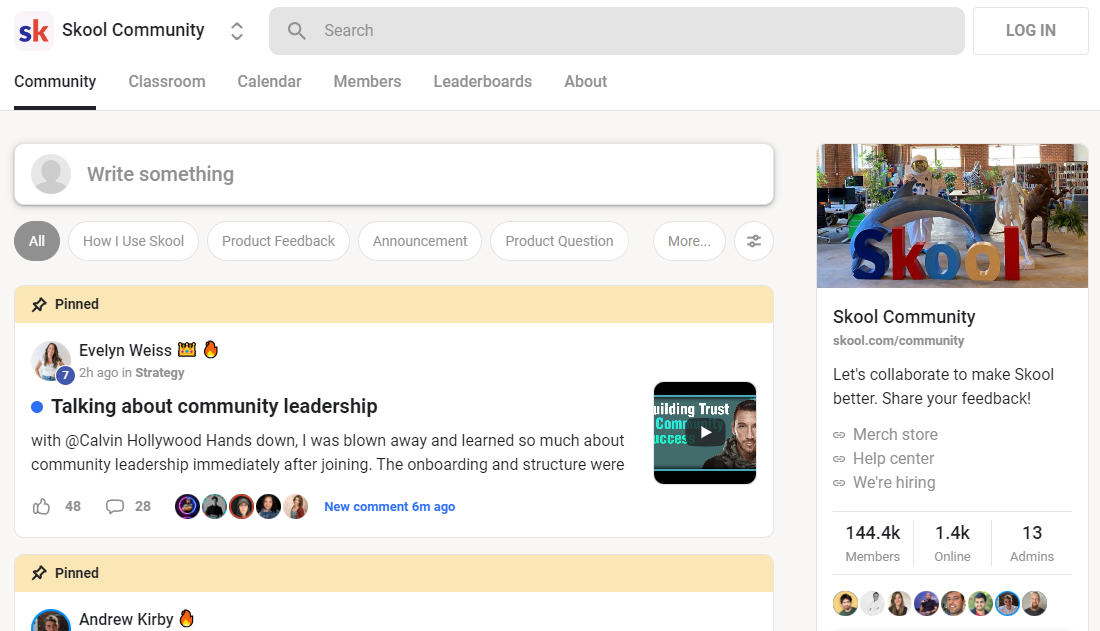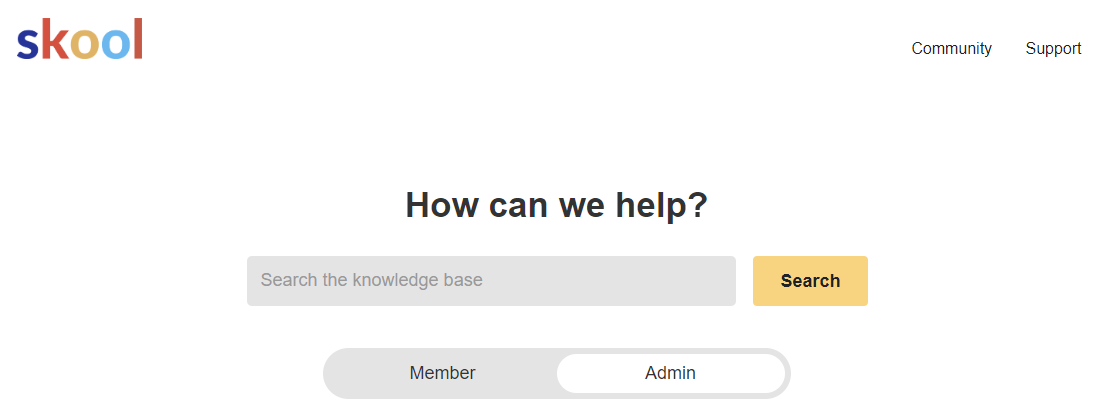Skool uses best-in-class gamification functions that boost interaction. For instance, members can earn degrees based upon their involvement, which unlock program web content and other rewards that additionally inspire them.
Previously, designers needed to use different devices for hosting training courses, developing neighborhoods and managing email advertising and marketing. This produced a disjointed experience for both designers and their target markets.
Developing Courses
Skool has an easy, straightforward interface and prioritizes neighborhood structure and training course holding over various other functions. It enables creators to create a vivid neighborhood for their courses and mentoring programs by connecting them with the right audience. This likewise helps them keep an eye on the health of their content business with the help of a basic control panel.

To begin, an individual can register for a cost-free 14-day trial of Skool. After that, they can pay $99 a month for the platform to host a solitary neighborhood. There are nothing else prices choices available for the moment. Skool also processes payment and pays developers weekly, yet it does bill a 2.9% transaction charge.
One of the special facets of Skool is that it can be utilized to develop interactive courses. These can consist of online webinars, team tasks and real-time discussions. These types of programs motivate involvement and boost course completion prices. In addition, Skool’s gamification functions aid to encourage area participation. For instance, members can gain factors and unlock program web content when they reach certain levels in the area.
Customers can likewise make use of the social eat Skool to upload updates and connect with others in the neighborhood. The feed resembles a Facebook team, however with a more controlled way of posting. This helps to avoid the type of spam and misuse that takes place on other social platforms.
Managing Communities
Skool is a really easy system to make use of, for both participants and admins. Its simpleness is among its primary selling factors– when a person joins your community they will not be faced with a bunch of choices or attributes that can derail their experience and confuse them.
The platform begins as a private group by default, however you can easily change this to open your neighborhood to any individual that you wish to belong to it. As soon as you’ve done this you’ll see a social feed like you would on Facebook Groups or WhatsApp (yet without all the scam stuff and swearing).
You can likewise add a classroom tab to your community that you can make use of to share educational web content with your members. This feature is specifically valuable for neighborhoods that are focused on discovering or expert growth as it helps to develop an educational framework and makes it very easy for members to track their development. In addition, the platform has gamification components that allow participants to make factors by liking posts or comments. When they get to a certain degree they can unlock sources, such as training courses, better driving engagement.
The other cool point is that Skool has a mobile app, similar to Mighty Networks or Slack, so members can stay on top of your neighborhood and interact on the move. This is an excellent way to encourage and involve your participants and to help them get support from each other when they require it, instead of simply turning to you for solutions.
Skool Vs Circle
Skool focuses on gamification, allowing customers to earn factors and badges for their contributions. This motivates members to involve with the neighborhood and add to conversations. In turn, this helps them level up and unlock perks like video clips and other web content. Admins can likewise set programs to be unlocked at details degrees to additional drive engagement.

The Skool interface is very clean and instinctive. Its highlights consist of the Community tab, which looks just like a Facebook group feed. Below, customers can post comments and text as well as upload images, web links and video clips. Participants can additionally see each others accounts and get in touch with them. In addition, individuals can produce exclusive groups in the community to go over specific subjects.
One more function of Skool is the Classroom tab, which resembles a YouTube livestream or Zoom conference. Utilizing this, managers can host trainings and webinars for their pupils. They can additionally include occasions in the calendar to remain updated on upcoming occasions and Skool Vs Circle.
However, some elements of Skool could utilize improvement. As an example, the system isn’t adaptable when it concerns money making as customers can not supply several pricing rates for their courses and neighborhood memberships. Furthermore, the device lacks an email advertising attribute, which could be a bargain breaker for some course creators. It likewise doesn’t have native video organizing, implying that customers need to utilize external systems like YouTube, Loom and Vimeo for their videos.
Adding Content
The procedure for including web content and communicating with members on Skool is very easy and straightforward. Admins can produce articles with text, GIFs, videos and polls. They can additionally add event calendars to alert area members of upcoming group Zoom calls or live streams. Furthermore, they can use Skool’s e-mail broadcast function to send out a message to the whole neighborhood with a single click. This removes the requirement for tagging and listing division, which can be difficult.
Moreover, Skool’s gamification attributes can increase engagement and individual retention. It urges members to engage with the material often by awarding them with different perks. These include unlocking course content, earning points and making a spot on neighborhood leaderboards.
While Skool uses a host of beneficial attributes for creating and providing online programs, it’s not for everybody. The platform is best for trains, experts and various other details business owners. Nevertheless, the price can be a barrier for some individuals aiming to monetize their online content.
In addition, the lack of fundamental rates and a short free trial might be a deterrent for many. In addition, the system’s laser-focus on eLearning can make it much less preferable for people that intend to market other digital items. Nevertheless, despite these disadvantages, Skool Vs Circle is still a viable choice for anyone aiming to create and monetize on-line courses.